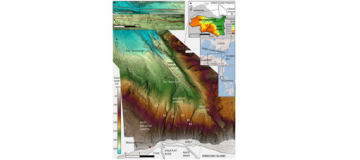
Turbidity currents and seabed infrastructures: insights from numerical models - Career Workshop
Speaker: Dott. Carlos Pirmez, CEO and founder of Weather Water Sand Srl, Genova (Italy) - Thursday 3 November – 4,30 pm | Aula Arduino
03.11.2022
Turbidity currents are known to travel hundreds to thousands of kilometers into the deep ocean, reaching velocities as high as 20 m/s with potentially catastrophic consequences to infrastructure installed along their path. The submarine cable industry has experienced their impact since the first cables have been installed across the Atlantic, for instance after the 1929 Grand Banks earthquake, and several other events across the globe since then. The use of the deep ocean for industrial infrastructure has grown at a fast pace since the 1990s, including the expanding network of telecommunication cables, deepwater oil & gas developments, scientific experiments, deep sea mining, and renewable energy projects. With the anticipated continued growth of offshore infrastructure, exposure to turbidity currents and other natural phenomena is a risk that needs to be managed.
For example, repeated turbidity current events over a period of 10 years offshore the Philippines were the cause of significant displacement of a subsea gas pipeline in several locations. Detailed analysis of the seabed topography and sediments, together with flow reconstructions, showed that the force of the turbidity current was sufficient to move a pipeline for more than 100 m on the seabed. Seabed erosion, caused by the translation of submarine bedforms resulted in long-span sections in the pipe, with zones of erosion, including the removal of protective gravel berms, alternating with zones of pipe burial by sedimentation.
Coupled atmospheric, hydrologic, and coastal circulation models now allow us to determine with much higher confidence the met-ocean conditions that lead to the initiation of turbidity currents at canyon heads, enabling a forecast-based risk analysis of specific sites. Recent advances in 3D numerical modelling of turbidity currents allow for detailed simulation, at field scales, of the flow and processes of erosion and deposition on the seabed, a powerful tool for the detailed design of routes and repair works.
In this presentation, we will show how learnings from case studies in the pipeline industry can be applied for optimized placement of infrastructure on the seabed and help mitigate the impact of potentially destructive effect of underwater flows.





